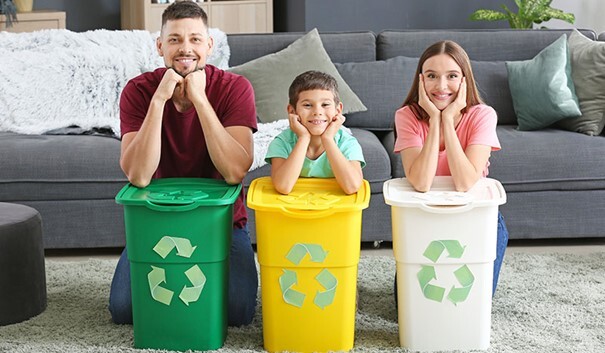How to Reduce Waste at Home

Reduce waste at home with simple steps such as recycling, composting, and shopping without packaging. Create a more sustainable and eco-friendly household.
Modern lifestyles often lead to an excessive amount of waste that ends up in landfills. However, with small changes to our daily habits, we can reduce waste and make our households more sustainable. Below are some effective ways you can contribute to waste reduction.

1. Recycling: Efficient Waste Sorting
Recycling is one of the easiest ways to reduce waste at home. By separating plastic, metal, glass, and paper waste and disposing of them correctly, you can significantly reduce the amount of trash that would otherwise end up in landfills. It’s important to know which materials are recyclable in your local community, as this allows for more efficient processing and reduces waste that goes to landfills.
- Tip: Always empty and clean packaging before recycling to prevent contamination of other recyclable materials.

2. Composting: A Natural Way to Reduce Waste
Organic waste, such as food scraps and garden waste, makes up a large portion of household trash. Composting these waste materials is an excellent way to reuse them while creating natural fertilizer for your garden. With the right composting system, you can reduce waste and simultaneously create healthy soil for your plants.
- Tip: If you don’t have a garden, consider indoor composting using special compost bins suitable for small spaces.

3. Package-Free Shopping and Reducing Food Packaging
Package-free shopping is becoming increasingly popular and helps reduce the amount of plastic packaging. Use your own textile or paper bags and glass containers when shopping to avoid unnecessary plastic. Always check if your local store offers bulk options for products such as grains, nuts, dairy, or detergents. For fruits and vegetables, head to local farmers’ markets to avoid pre-packaged produce and support local growers.
- Tip: Bring your glass jars and reusable bags to markets or stores to reduce plastic usage.

4. Reuse: Reducing the Need for New Products
In addition to recycling, reusing items is one of the most effective ways to reduce waste. Instead of discarding items like glass jars, boxes, or clothes, try using them in new ways. Glass jars can be excellent storage containers, and old clothes can be repurposed into new garments with simple sewing fixes. Those that can no longer be used can be easily turned into cleaning rags. Thrift shopping for clothes and textiles helps save money while allowing you to refresh your style and donate excess clothes to those in need.
- Tip: Be creative when reusing household items and adapt them to new purposes. Before buying new clothes, check the second-hand market for great finds.

5. Reducing Waste in Cleaning
Many cleaning products come packaged in plastic and may contain harmful chemicals. Consider using eco-friendly cleaning products, often available in larger packages or even in bulk. Additionally, some household cleaners can be made at home using ingredients like vinegar, baking soda, and Marseille soap.
- Tip: Look for stores where you can buy cleaning supplies in bulk or make your own natural cleaning solutions at home.
6. Buying and Selling Second-Hand Items
Participating in the second-hand market is a sustainable and cost-effective way to buy and sell unique items while saving money. If you no longer use certain items, you can repurpose or sell them through online marketplaces or local thrift stores. You can also donate them to people who need them. Before buying new products, consider purchasing second-hand items.
- Tip: Before buying something new, check whether you can find a similar item in a thrift store or online marketplace. This reduces the demand for new products and extends the life of existing items.

7. Sustainable Fashion
Embracing sustainable fashion is a powerful way to reduce environmental impact and improve conditions for workers in the textile industry. Look for brands that prioritize ethical and eco-friendly practices and have appropriate certifications. Choose clothes made from organic, recycled, or upcycled materials and focus on timeless, high-quality pieces instead of continuously following new trends and buying low-quality garments.
- Tip: Consider buying clothes from brands that use sustainable materials, such as organic cotton or recycled polyester, and focus on durable pieces you can wear for several seasons.
Conclusion
Reducing waste at home can be achieved through simple changes in our daily habits. With proper recycling, composting, and shopping without packaging, each of us can contribute to a more sustainable lifestyle. Reusing items, carefully selecting sustainable clothing, and participating in the second-hand economy bring us closer to reducing our environmental impact and encouraging mindful consumption. By taking small steps that start at home, we can help protect the environment, reduce waste, and preserve resources for future generations.
Beyond setting an example, we can also raise awareness about waste reduction. With our knowledge and experiences, we can influence our family, friends, and local community, leading to a higher level of environmental awareness. Every step can create a ripple effect that contributes to a cleaner and greener future for all.
Sources:
www.recyclenow.com
www.thepersonal.com
www.biologicaldiversity.org